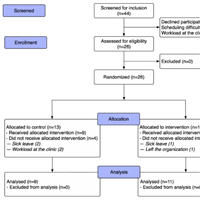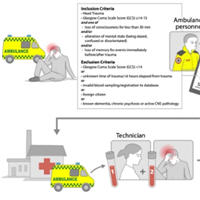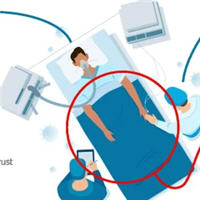Tag: study

Reducing the Global Sepsis Burden: A Positive Legacy for the COVID-19 Pandemic?
ESICM, SCCM, and the GSA published a consensus paper in Intensive Care Medicine, emphasising the importance of recognising that patients critically ill with COVID-19 have viral sepsis, despite some differences from sepsis... read more

Optimizing the Timing of RRT in AKI
The optimal timing of renal replacement therapy (RRT) in critically ill patients with acute kidney injury (AKI) has been much debated. Over the past five years several studies have provided new guidance for evidence-based... read more

Standardized post-resuscitation damage assessment of two mechanical chest compression devices
The LUCAS 2 device shows superior resuscitation outcomes and less thoracic injuries compared to Corpuls cpr when used for experimental CPR in juvenile pigs. Researchers should be aware that different mCCDs for experimental... read more

Effects of 5% Albumin Plus Saline vs. Saline Alone on Outcomes From Large-Volume Resuscitation in Critically Ill Patients
During large-volume resuscitation, 5% albumin was associated with reduced mortality and major adverse kidney event at 30, 90, and 365 days. However, a higher rate of acute kidney injury of any stage was observed that did... read more

Evolving Changes in Mortality of Critically Ill with COVID-19 Over 8 Months
Age and mortality rates have declined over the first 8 months of the pandemic. The use of non-invasive respiratory support (NIRS) as the first respiratory support measure was associated with survival, but causal inference... read more

What is the Ideal Approach for Emergent Pericardiocentesis Using POCUS Guidance?
A total of 166 pericardial effusions were identified during the study period. The mean skin-to-pericardial fluid distance was 5.6 cm for the subxiphoid views, which was significantly greater than that for the parasternal... read more

Do team and task performance improve after training situation awareness?
This intervention study shows that a 2-h education in situation awareness improved parts of team performance in an acute care situation. Team leadership and task management improved in the intervention group, which may indicate... read more

Diagnostic accuracy of prehospital serum S100B and GFAP in patients with mild TBI
Early prehospital and in-hospital S100B levels 0.10 μg/L was 100% (95%CI: 89.1;100.0) in prehospital samples and 100% (95% CI 89.1;100.0) in in-hospital samples. The specificity was 15.4% (95%CI: 12.4;18.7) in prehospital... read more

Tocilizumab Use May Be Associated with a Short-term Mortality Benefit
For hospitalized COVID-19 patients, there is some evidence that tocilizumab use may be associated with a short-term mortality benefit, but further high-quality data are required. Its benefits may also lie in reducing the... read more

Why and How to Open ICU to Family Visits During the Pandemic
Since the lockdown because of the pandemic, family members have been prohibited from visiting their loved ones in hospital. While it is clearly complicated to implement protocols for the admission of family members, we believe... read more

Higher Level of Mobilization Improves Health Status
In critically ill survivors, achieving higher levels of mobilization, but not increasing the number of active mobilization sessions, improved health status 6 months after ICU admission. The dosage of mobilization in ICU... read more

COVID-19 ARDS has higher EVLWi and PVPI values than non-COVID-19 ARDS
Compared to acute respiratory distress syndrome (ARDS) patients without COVID-19, patients with COVID-19 had similar lung mechanics, but higher extravascular lung water index (EVLWi) and pulmonary vascular permeability index... read more

Quantitative Characterization of LV Function During Pulseless Electrical Activity Using Echocardiography
Left ventricular function measured by LVFS is positively correlated with higher probability of rates of return of spontaneous circulation (ROSC) and may be associated with higher chances of survival in patients with PEA arrest. We... read more

Neurological Complications Acquired During Pediatric Critical Illness
Graphical models that include biomarkers in addition to clinical data are promising methods to evaluate direct relationships in the development of neurologic complications in critically ill children. Future work is required... read more




